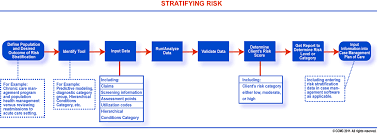
Case management methods
Case management methods
Order Instructions:
Please select question 1 or 2 because I feel like there is alot more information on it. with 15-20 reference’s of harvard referencing. i will also attach more files on assignment hints on the order page.
Assessment #2 –
Questions
1. What are the critical issues including obstacles to and problems with engagement, intake, screening and assessment for case management (or individualised funding)?
* Gursansky 2003 – chapter 4
* Gursansky et al 2012 Chapters 1 and 3.
Intake – eligibility criteria, marketing of program, outcomes for clients, changing nature of criteria, organisational structures which impact.
Engagement – data bases, clients and development of effective relationships
Assessment – support from services clients already receive, planning, intervention linkages and how purposeful is it.
————————————————————————————————————
2. Identify thecritical issues including obstacles to andproblems with service planning and implementation for case management (or individualised funding).
* Gursansky 2003 – chapter 4
* Gursansky et al 2012 Chapters 4 and 5.
Goals, strengths, what has worked and what has not, formulating the plan with the client, what does the client want and what do they actually access, impact of the lack of resources, the importance of effective planning –flexibility, allowing for diversity, a range of sources, what is available intra and inter service providers and clear thinking and sustained engagement.
—————————————————————————————————————-
3. Outline thecritical issues including obstacles to and problems with termination, review, follow up and evaluation for case management (or individualised funding).
* Gursansky 2003 – chapter 4
* Gursansky et al 2012 Chapters 6 and 7.
Monitoring – checking in with clients, plan of action, working out what is working and what is not, advocacy at the service and client level and evidence based research.
SAMPLE ANSWER
1.0 Introduction
Case management methods are widely employed in Australia as is often the case in other countries. However, there exists a perspective of shared understanding when it comes to case management to the extent that a section of authors assert it veers away from the need for close examination and analysis of case to formulate a better model and practice. In a real world, case managers should be conversant with the needs of individuals such as mental illness, substance abuse, chronic health issues, homelessness, illicit activities, parenting minors, and physical impairment among others (Huber et al. 2003). For instance, a case manager should be in a position to comprehend the client’s background in terms of accessible social services, monetary and legal implications, and the clinical complication of the problem among others. While case management is synonymous with assessment, planning, coordination, screening, and appraisal, this paper looks at the critical issues including obstacles to and problems with engagement, intake, screening, and assessment for case management.
2.0 Engagement
The case manager has the responsibility of providing services in non-conventional techniques with the goal of reaching the customers rather as opposed to the customers seeking assistance. While engagement seeks to t fulfill and identify customers’ immediate requirements, the first phase is challenging (Australian Bureau of Statistics, 2012). Motivation can be fleeting while accessibility to services is constrained.
These problems are evident in customers’ conduct including missed appointments, continuous use, and unwillingness to change among others. During this stage, the objective of case management is minimizing internal and external barriers, which hinder treatment. the reluctance clients to receive treatment may be minimized in various ways including; motivation techniques; basic knowledge on addiction; continuously reminding clients about the effects of drug abuse; fulfill clients’ survival expectations; and dedication to creating mutual association between the case manager and clients (Gursansky, Kennedy & Camilleri 2012).
2.1 Effective Relationships
The parties involved in authorizing behavioral health can be requested to give their input although customers’ persistence can be a major hindrance towards access to healthcare services. Potential clients can be unfamiliar with treatment procedures, an issue that calls for the development of effective associations between the case manager and the client (Gursansky, Kennedy & Camilleri 2003). Nonetheless, the dilemma may exist between clinical experiences presented by nurses and social workers. Their preferences with regards to treatment can be irrational, and they know little about drug abuse, or addiction. Moreover, it is exceptional for individuals during this phase to reduce the effects of drug abuse for the sake of their health.
3.0 Intake
This is the first meeting with clients that present case managers the opportunity to collect information to tackle their needs while encouraging engagement and retention of the service process (Australian Bureau of Statistics 2012). This is the stage used to establish whether or not a client needs have been met. Nonetheless, it is difficult for the case managers to adequately determine the suitable strategy to fulfill client’s needs and examine their readiness to participate in case management (Gursansky, Kennedy & Camilleri 2012). This process is characterized by ethical dilemmas as case managers may choose an inappropriate approach.
3.1 Eligibility
The case manager has the prerequisite to screen the client’s problem substantively. At this point, assessment would act as a reference point to determine the eligibility and detailed evaluation to be presented to guide the creation of an intervention plan. Prescreening for eligibility and coordination to minimize any barriers can enhance accessibility. The procedure of motivating clients starts with education, identification of important needs, and creation of mutual relationship. This procedure can commence in the prescreening stage. Motivation facilitates engagement using exploratory and not confrontational techniques. Nevertheless, it is essential to understand that each client has his/her own needs in joining the treatment process.
For instance, if the client has communication needs, the goal may be to determine if a child can exhibit deficits in communication/feeding development. On the other hand, in the planning and implementation phase, the case manager in collaboration with a team of experts designs an intervention plan that support services which involve techniques and settings (Chappell 2012). The two roles aim at maximizing the clients’ ability to effectively reform while increasing the family capacity to support the development of the client. However, screening is a vital element of prevention. Creating family awareness through education is significant for children as well as their respective families.
Much as education in assessment differ on the basis of the method used, informed medical perspective of the case manager is crucial in establishing eligibility of the client. Nonetheless, in the planning and implementation phase, support services are individualized for every client and family; hence, facilitating different techniques and designs of intervention that incorporate quality service delivery. In both roles, procedures and activities depict a given family’s preferred method and degree of participation.
3.2 Outcomes
The greater part of investigative research with regards to case management lies in mental health with less activity in human service. This helps to put more emphasis of various social issues. Efforts to analyse case management services have been hindered by a plethora of intricate factors. Different and overlying models of case management, an elusive agreement of definitions, and the ambiguity that surrounds the probability of fidelity of providers are some of the problems affecting the efficacy of case management. The anomaly is further enhanced by the documentation of unrelated outcome measures in studies that makes any effort comparisons between various interpolations problematic. Gursansky et al. (2012) assert that ascribing client or program results to a certain service-delivery methodology can be problematic. A holistic service case is linked to better outcomes to management, retention and acquiescence, reduced hospitalization, positive client contentment and modest cut down in service costs. On the other hand, dealership models fail to retain clients in management, enhanced hospitalization rates and operations expenses. While the two approaches of case management have analogous impact when it comes to enhancing the symptoms in terms of the levels of social wellbeing, emphatic community treatments is better off than the clinical management approach in reducing admission to hospital.Ultimately, case management leads to reduced criminal activities when it comes to correction agencies. However, in terms of social work and mental wellness, the legitimacy of case management methods in as far as correction is concerned appears scanty. There are certainly consequences and challenges for apportioning resources in community corrections to offer and ensure reliable levels of service. Even though the CCS makes recommendations to the courts, the streaming of clients is unpredictable and largely managed by the judiciary.
3.4 Organisational Structure
Motivation transitions from clients’ non-recognition of the issue to understanding the significance of treatment, determining necessary course of action, and maintaining the realized objectives (Gursansky, Kennedy & Camilleri 2012). Case management may employ this structure in engaging with the client based on the phase-suitable services. This implies that a client that failed to deal with drug abuse can be integrated into an intensive management process by giving fundamental practical assistance. Such form of assistance is important in terms of reducing the perceived desire to engage in drug abuse and the associated lifestyle. Structured interviews present clients with opportunities to discuss their substance abuse and past history with case managers while exploring the losses due to drug abuse. However, the previous history of some clients may provide a trend of increased loss of independence.
4.0 Assessment
Treatment is dependent on the instruments that are largely valid and reliable when used with two groups of clients from different cultural backgrounds. Whereas interpretation of some tools for the population who’s English is not their first language have been realized, the accuracy of the applied tools is not always recorded (Stanger et al. 2009). Under normal circumstances, screening and assessment for women should be meticulous; hence, some women from different cultural backgrounds find the procedure intimidating, unpleasant and foreign. In some communities, issues of individual practices can be seen as superfluously intrusive (Gursansky, Kennedy & Camilleri 2012). Majority of women do not have experience with Australian medical care and hardly comprehend the assessment process. Others may develop negative attitudes with healthcare providers or treatment schedules and create an impression of unfair treatment. This may impede the assessment process. In this regard, screening and assessment should be anchored on perceptions that put a lot of primacy on cultural significance (Coatsworth et al. 2001).
In most cases, there has been a miscomprehension of the client’s cultural basis in terms of health beliefs, sickness behaviors, and outlook toward of treatment. This impacts the delivery of quality services. Assessment is the first step of developing clients’ needs. In addition, it is an essential phase of case management. It involves collecting all the client’s needs to develop the case (Gursansky, Kennedy & Camilleri 2003). This may require collecting and analysis of clients’ information. Moreover, assessment can be carried out with no direct contact with clients, rather gathering useful historical data to help understand a client’s needs. As a result of the complex nature of the assessment phase, case managers are required to be flexible so as to not only identify, but also address developments while reviewing approaches and objectives as needed (Padgett et al. 2011). Much as partnership standards present specific areas to be covered in eligibility assessment, ethical dilemmas emerge because there are no requirements for separate expectations of clients besides eligibility assessment.
4.1 Purpose of Assessment
Case assessment serves as the platform upon which to gather necessary information to allow plan and provide appropriate intervention. Information collected from clients is critical in determining baseline details, health levels, dangers of malfunction or strengths, and weaknesses as far as the illness process is concerned. With regards to social issues, the case manager should determine whether or not the client lives alone and does not want to bother other family members, and whether financial issues make them worried about the future. As a result, the community nurse should perform comprehensive home assessment (Gursansky, Kennedy & Camilleri 2003). In addition, head to toe assessment and comprehensive health history assessment should also be used on the client to discover further health information.
Clinical assessments help case managers to intervene the situations of clients. Moreover, it plays a vital role in determining the condition that the clients are in since medication is recommended depending on the extent of the situation whether it is mild or severe (Willis et al. 2013).
4.3 Planning
Planning process entails concentrating on structural components of case management like the occurrence and details of the problem, identifying measurable objectives, and required services to address particular needs. Planning of the case is individualized with detailed documents looking at various elements of clients’ wellbeing in accordance with useful and factual data (Rapp et al. 2008). This is attained through intake interviews to determine baseline demographic and analytical data to create the initial client plant.
However, impartiality and objectivity are more and more essential aspects that present ethical issues to the case manager. For instance, a case manager working with institutions that offer services may be required to include such services in their case management recommendations, particularly when services are not suitable for policyholders. Consequently, how the case manager opts to arrange and employ data gathered leads to the efficacy of the program (Ingoldsby 2010). The use of technology can be used for tracking data and ensuring interaction, planning and performance control of the respondents is upbeat. While a case manager may adopt a particular methodology, it may be hectic to formulate not just a clear process for determining the client expectations, but also for evaluating skills and occurrences. The case manager works in conjunction with the client to create an Individual Service Plan (ISP) that comprises of short term and long term objectives. When it comes to meeting client expectations, clients that have a broad network of service providers can offer their help by creating plans aimed at curbing reoffending.
4.4 Intervention Linkages
By and large, organizations should be reliant on ensuring their ties with communities remain as strong as ever (Sorensen et al. 2003). This is critical particularly in meeting the needs of a wider scope of participants. Linkages with community stakeholders such as agencies and religious institutions among others are pertinent as the economy shrinks and need for support services blossoms. On the flip side, the diversity in the pragmatic application has culminated into differences as far as case management in Australia is concerned. This makes the definition of case management fluid, an aspect that culminates into the standardization of comprehending and utilization (Johnson et al. 2013).Consequently, disparities in its usage have ended in the lack of compelling evidence and consensus on the outcomes for service users especially in relation to its longitudinal impacts. Gursansky & colleagues (2012) reiterate that substantial disparities are evident in modern case management practice in Australia when it comes to the design, application and practice of case management. The problem with lack of clarity is that providers and recipients do not understand the rationale and processes of case management. The differences in methodologies being implemented are often a catalyst for confusion in terms of service delivery (Gursansky et al, 2012).
4.5 Interventions
The assessments and interventions depend on the nature of the problem, age, and the therapy that the clients may have received in the past. Case managers use scaffold to intervene client situation which are later withdrawn slowly as the client responds to therapy (Gursansky, Kennedy & Camilleri 2003). The purpose is to identify the cause of the problem, teach compensatory strategies, or to modify the client’s issue. Intervention approaches consider long term goals of the client, development of behavioral objectives, pretesting the client, and administering tests to determine the condition of the client (Slesnick et al. 2008). Intervention processes vary and depend on the case manager’s choice. The interventions can be structured or naturalistic, but depend on severity of the problem. However, a combination of both strategies can help in enhancing the client’s recovery process.
There are principles that guide the procedure of dealing with clients that have been sourced for controlled trials (Gursansky, Kennedy & Camilleri 2003). These trials are associated with the brain; thus, pathologists use these principles when dealing with clients. The aim of intervention by case managers is to improve the client’s health condition. In any case, one-sided details and objective data offer a clear understanding of clients’ opinion. For this reason, it is of great importance to develop a good relationship between nurse and clients in order to ensure the aspect of trust (Alexander & Robbins 2011). A good relationship between nurse and clients increases harmony and the basis which allows clients to present accurate information. In other words, nursing assessments can be valid and precise when the nurse obtains information which is not one-sided.
5.0 Conclusion
Based on what has been discussed therein above, it becomes evident that while clinical knowledge may be significant to nurses, it may not necessarily be of significance to social workers. In the same breadth, health and human service workers may hardly comprehend the fact that they share same experiences. For instance, a case manager responsible for substance abuse individuals is vulnerable to many risks and constraints.
References
Alexander, J.F. and Robbins, M.S., 2011. Functional family therapy (pp. 245-271). New York: Springer.
Australian Bureau of Statistics 2012. Information Paper – A Statistical definition of
Homelessness, 4922.0, Australian Bureau of Statistics, Commonwealth of Australia, Canberra.
Chappell, C. 2012. Case coordination handbook: a field guide to the care planning and management of people who have complex needs and occupy public places in Townsville, Accessed 2 November 2012
Coatsworth, J.D. et al 2001. Brief Strategic Family Therapy versus Community Control: Engagement, Retention, and an Exploration of the Moderating Role of Adolescent Symptom Severity*. Family Process, 40(3), pp.313-332.
Gursansky, D, Kennedy, R & Camilleri, P 2012. The Practice of Case MANAGEMENT, 1st Edition, Allen and Unwin, St Leonards, NSW.
Gursansky, D., Kennedy, R., & Camilleri, P. 2003. Case Management: Policy, Practice and Professional Business. Allen & Unwin, Sydney
Huber, D.L., Sarrazin, M.V., Vaughn, T. and Hall, J.A., 2003. Evaluating the impact of case management dosage. Nursing Research, 52(5), pp.276-288.
Ingoldsby, E.M., 2010. Review of interventions to improve family engagement and retention in parent and child mental health programs. Journal of child and family studies, 19(5), pp.629-645.
Johnson, R.L. et al 2003. The utilization of treatment and case management services by HIV-infected youth. Journal of Adolescent Health, 33(2), pp.31-38.
Padgett, D.K. et al 2011. Substance use outcomes among homeless clients with serious mental illness: Comparing Housing First with treatment first programs. Community mental health journal, 47(2), pp.227-232.
Rapp, R.C. et al 2008. Improving linkage with substance abuse treatment using brief case management and motivational interviewing. Drug and alcohol dependence, 94(1), pp.172-182.
Slesnick, N. et al 2007. Treatment outcome for street-living, homeless youth. Addictive behaviors, 32(6), pp.1237-1251.
Sorensen, J.L. et al 2003. Case management for substance abusers with HIV/AIDS: a randomized clinical trial. The American journal of drug and alcohol abuse, 29(1), pp.133-150.
Stanger, C. et al., 2009. A randomized trial of contingency management for adolescent marijuana abuse and dependence. Drug and Alcohol Dependence, 105(3), pp.240-247.
Willis, S. et al 2013. Linkage engagement and viral suppression rates among HIV-infected persons receiving care at medical case management programs in Washington, DC. Journal of acquired immune deficiency syndromes (1999), 64(0 1).
We can write this or a similar paper for you! Simply fill the order form!




